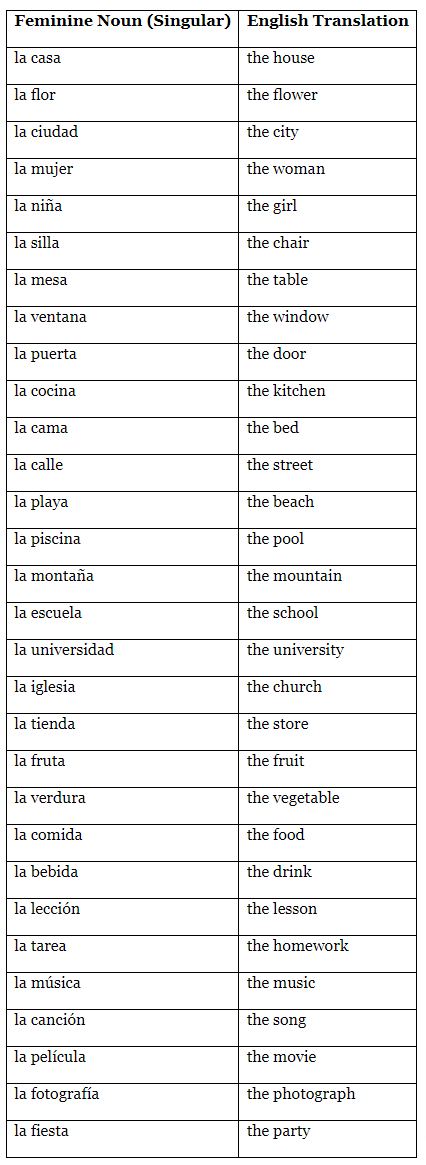Describing People | Spanish: Beginner A1 Level - Class 6 PDF Download
People - Gender and Number in Spanish
Introduction to Gender and Number
In Spanish, nouns have gender and number, which affect the adjectives and articles that are used with them. This lesson will explore how words change depending on these two grammatical categories.
Gender of Nouns
Defining Gender in Spanish Nouns
- Masculine: Most nouns ending in “-o” are masculine.
- Feminine: Most nouns ending in “-a” are feminine.
Describing People
- Use masculine or feminine adjectives to agree with the person’s gender.
- Examples:
- Él es alto (He is tall).
- Ella es alta (She is tall).
Gender and Number
Singular to Plural
- Add “-s” to nouns ending in vowels to make them plural.
- Add “-es” to nouns ending in consonants to make them plural.
Agreement in Gender and Number
- Adjectives must agree with the noun in both gender and number.
- Examples:
- El chico inteligente (The smart boy).
- Los chicos inteligentes (The smart boys).
- La chica inteligente (The smart girl).
- Las chicas inteligentes (The smart girls).

Examples of nouns changing from singular to plural, with explanations:
- El libro (the book) becomes los libros (the books) - Add “-s” to a noun ending in a vowel.
- El reloj (the watch) becomes los relojes (the watches) - Add “-es” to a noun ending in a consonant.
- El análisis (the analysis) becomes los análisis (the analyses) - Some nouns remain the same in plural form.
- El lápiz (the pencil) becomes los lápices (the pencils) - For nouns ending in “-z”, change “-z” to “-c” and add “-es”.
- El mes (the month) becomes los meses (the months) - For nouns ending in “-s” with a stressed syllable before the “-s”, add “-es”.
- El carácter (the character) becomes los caracteres (the characters) - For nouns ending in “-ter”, add “-es”.
- El joven (the young man) becomes los jóvenes (the young men) - For nouns ending in “-n” or “-e”, add “-es” and accent marks may change.
- El alemán (the German) becomes los alemanes (the Germans) - For nouns ending in “-án”, “-ón”, or “-ín”, add “-es” and change the accent.
- El francés (the Frenchman) becomes los franceses (the Frenchmen) - For nouns ending in “-és” with an accent, add “-es” and keep the accent.
- El cactus (the cactus) becomes los cactus or los cactos (the cacti) - Some nouns have two plural forms, one from the original language and one regular Spanish form.
These examples illustrate the rules for forming the plural in Spanish, which generally involve adding “-s” or “-es”, and sometimes require changes in spelling or accents to maintain pronunciation.

Examples of nouns changing from singular to plural for feminine nouns:
- La ciudad (the city) becomes las ciudades (the cities) - Add “-es” to a noun ending in a consonant.
- La luz (the light) becomes las luces (the lights) - For nouns ending in “-z”, change “-z” to “-c” and add “-es”.
- La canción (the song) becomes las canciones (the songs) - For nouns ending in “-ión”, add “-es” and drop the accent.
- La universidad (the university) becomes las universidades (the universities) - For nouns ending in “-dad”, add “-es”.
- La crisis (the crisis) becomes las crisis (the crises) - Some nouns remain the same in plural form.
- La ley (the law) becomes las leyes (the laws) - For nouns ending in a vowel followed by “-y”, change “-y” to “-i” and add “-es”.
- La mujer (the woman) becomes las mujeres (the women) - For nouns ending in “-j”, add “-es” and the letter may change.
- La voz (the voice) becomes las voces (the voices) - For nouns ending in “-z”, change “-z” to “-c” and add “-es”.
- La flor (the flower) becomes las flores (the flowers) - Add “-es” to a noun ending in a consonant.
- La actriz (the actress) becomes las actrices (the actresses) - For nouns ending in “-z”, change “-z” to “-c” and add “-es”.
These examples illustrate the rules for forming the plural in Spanish for feminine nouns, which generally involve adding “-s” or “-es”, and sometimes require changes in spelling or accents to maintain pronunciation.
Exercises
- Convert five singular nouns to their plural forms.
- Describe three people using adjectives that agree in gender and number.
- Create sentences using both masculine and feminine forms of nouns and adjectives.
|
33 videos|38 docs|28 tests
|
FAQs on Describing People - Spanish: Beginner A1 Level - Class 6
| 1. ¿Cuál es la diferencia entre género y número en español? |  |
| 2. ¿Cómo puedo identificar el género de una palabra en español? |  |
| 3. ¿Qué significa que una palabra sea singular en español? |  |
| 4. ¿Cuál es la importancia de aprender el género y número en español? |  |
| 5. ¿Existen reglas específicas para determinar el género y número de una palabra en español? |  |




















